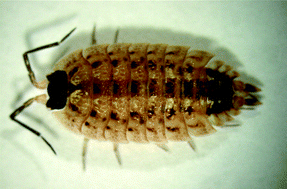The cuticles of four terrestrial and four marine isopods were analyzed. They consist of crystalline magnesian calcite, amorphous calcium carbonate (ACC), amorphous calcium phosphate (ACP), water and an organic matrix. Marine species have a higher concentration of magnesium within the cuticle in comparison to their terrestrial relatives. Flexible cuticles contain ACC in combination with a high concentration of organic material and a rather low concentration of magnesium calcite. Hard cuticles have a low percentage of organic material, and, in terrestrial species, a higher percentage of ACC. The results indicate that the mineral composition of the crustacean cuticle depends on its function and the habitat of the animal.
You have access to this article
 Please wait while we load your content...
Something went wrong. Try again?
Please wait while we load your content...
Something went wrong. Try again?


 Please wait while we load your content...
Please wait while we load your content...